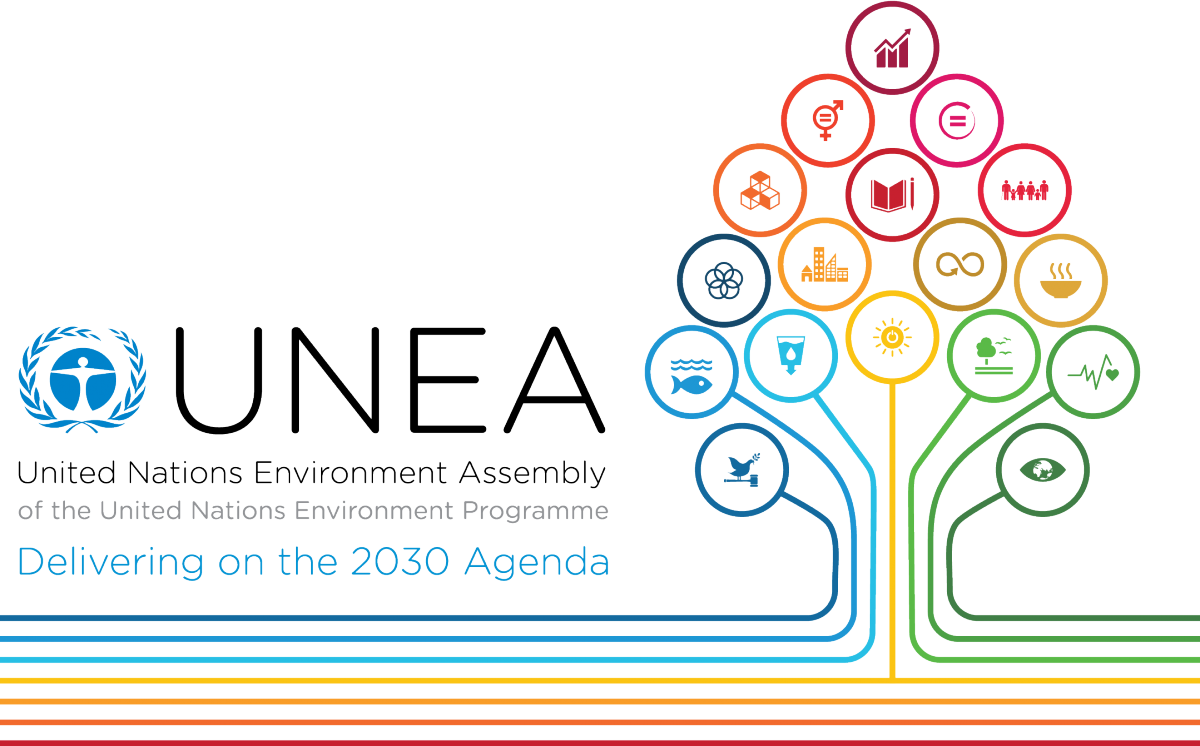
25 Landmark Resolutions to Drive Sustainability Agenda and Paris Climate Agreement at UN Environment Assembly
NAIROBI, Kenya, 27 May 2016 / PRN Africa / — The world’s environment ministers, gathered at the second session of the United Nations Environment Assembly (UNEA-2) in Nairobi on late Friday, passed far reaching decisions on issues such as marine litter, the illegal trade in wildlife, air pollution, chemicals and waste, and sustainable consumption and production – which are an integral part of the global action needed to implement the 2030 Agenda for Sustainable Development and the Paris Climate Agreement.
UNEP Executive Director Achim Steiner said, “The environment has always been, and will always be, at the heart of humanity’s prosperity. World nations recognized this in 2015 with global accords, such as the 2030 Agenda, the Paris Agreement, the Sendai Framework on Disaster Risk Reduction and the Addis Ababa Action Agenda.
“What we have seen in the last five days is the same political will and passion for change that brought about the groundbreaking international agreements of 2015. With global consensus affirmed, we are taking steps to bring about a real transformation of our development models. The United Nations Environment Assembly is providing leadership and guidance the world needs to take these unprecedented steps.
“In the decisions made here at this assembly for the environment, we see a significant directional shift that will inform Ministers’ decisions in their home countries. We will now need to see the bold and decisive commitment observed at UNEA transmitted at the national level to drive forward the 2030 Agenda and ensure a brighter future for people and planet.”
Thousands of delegates from 174 countries, 120 at the ministerial level, took part in UNEA-2 and associated side events on issues of global importance, including the Sustainable Innovation Expo and the Science-Policy Forum.
UNEA-2 sessions were attended by UN Deputy Secretary General Jan Eliasson; the President of the Republic of Kenya, H.E. Uhuru Kenyatta; UN Habitat Executive Director Joan Clos; and Vice-President of Iran and Minister of Environment Masoumeh Ebtekar. The sessions were presided over by Costa Rica’s Minister of Environment Edgar Gutiérrez, who took over from Oyun Sanjaasuren, former Minister of Environment and Green Development for Mongolia.
Among the 25 resolutions and actions decided at UNEA-2, the theme of which was “Delivering on the 2030 Agenda for Sustainable Development”, the following themes dominated:
2030 Agenda and Paris Agreement Implementation
The main theme of UNEA-2, Delivering on the 2030 Agenda, was a particular focus. The implementation of the work to achieve the Sustainable Development Goals (SDGs) will be a primary undertaking of the UN system, and the Assembly showed their full understanding of this.
UNEA asked UNEP to initiate new partnerships and strengthen existing ones, including with the private sector and civil society.
Building on its work in sustainable finance with the UNEP Inquiry into the Design of a Sustainable Financial System and the UNEP Finance Initiative, member states also asked UNEP to continue to build on its work at the intersection of finance and the environment.
With the Paris Agreement one the most significant environmental agreements in recent decades, UNEA also agreed that UNEP should accelerate support to countries, especially developing countries, to build national readiness capacity to implement the Agreement, build implementation capacity and capacity to access finance and technology.
Illegal Trade in Wildlife
A key issue at UNEA-2 was the illegal trade in wildlife, which is pushing species to the brink of extinction, robbing countries of their natural heritage and profiting international criminal networks.
UNEA-2 passed a resolution building upon previous commitments made at the first UNEA and General Assembly resolution 69/134, urging Member States to take further steps at the national level and through regional and international cooperation to prevent, combat and eradicate the supply, transit and demand related to the illegal trade in wildlife and wildlife products.
This includes implementing strategies and action plans, strengthening governance systems on issues such as anti-corruption and anti-money-laundering, supporting the International Consortium on Combating Wildlife Crime and the African Elephant Fund, and developing sustainable and alternative livelihoods for communities affected by the illegal trade in wildlife and its adverse impacts.
UNEP and partners – with the backing of celebrities such as Gisele Bündchen, Neymar Jr. and many others – also launched a new campaign, Wild For Life, to engage millions of members of the public to end the illegal trade in wildlife. Angola, which is hosting World Environment Day on 5 June, will make new commitments to combat the trade, particularly in ivory.
Marine Litter and Debris
It is estimated that there are 5.2 trillion pieces of plastic floating in our oceans, harming both the marine environment and biodiversity. To address this problem, member states resolved to encourage product manufacturers and others to consider the lifecycle environmental impacts of products containing microbeads and compostable polymers, including possible downstream impacts.
Delegates also sought the assistance of UNEP to assess the effectiveness of governance strategies and approaches to combat marine plastic litter and microplastics, and identify how to address gaps. They asked UNEP to help develop and implement national and regional action plans to target marine litter, with emphasis on those regions that are the largest sources.
Healthy Environment, Healthy People
World Health Organization estimates show that an estimated 12.6 million deaths are attributable to environmental factors each year, highlighting the importance of a healthy environment to healthy people. Several resolutions related to human health and the environment were passed. The resolution on sound management of chemicals and waste targeted actions on chemicals such as lead – exposure to which claimed an estimated 654,000 lives in 2010 and causes developmental damage to young children.
Delegates called on UNEP to develop research on actions that could be adopted to implement the Sustainable Development Goals (SDGs) relevant to the issue; asked the private sector to play a bigger role in an integrated approach to the sound management of chemicals and waste; and requested nations to ensure better recycling of lead-acid batteries at national or regional facilities.
Another resolution called on UNEP to establish a global research network on the threat posed by sand and dust storms and integrate the issue into its work. Sand and dust storms contribute to lowered air quality – a worldwide problem that claims seven million lives each year.
Other resolutions
Armed conflict and its relation to the environment was also a significant source of discussion at UNEA-2. A symposium focused on environment and displacement : root causes and implecations.
One decision called on Member States to take appropriate measures to ensure compliance with international obligations under international humanitarian law in relation to the protection of the environment in times of armed conflict.
Resolutions on food waste and sustainable consumption and production, which both impacts on the 2030 Agenda and Paris Agreement in terms of increasing emissions and resource use and holding back efforts to reduce hunger, were passed. The resolution called for increased efforts and cooperation to decrease the one third of all food produced each year that is lost or wasted and committed Member States to achieving SDG 12, which focuses on Sustainable Consumption and Production.
SOURCE United Nations Environment Programme (UNEP)
